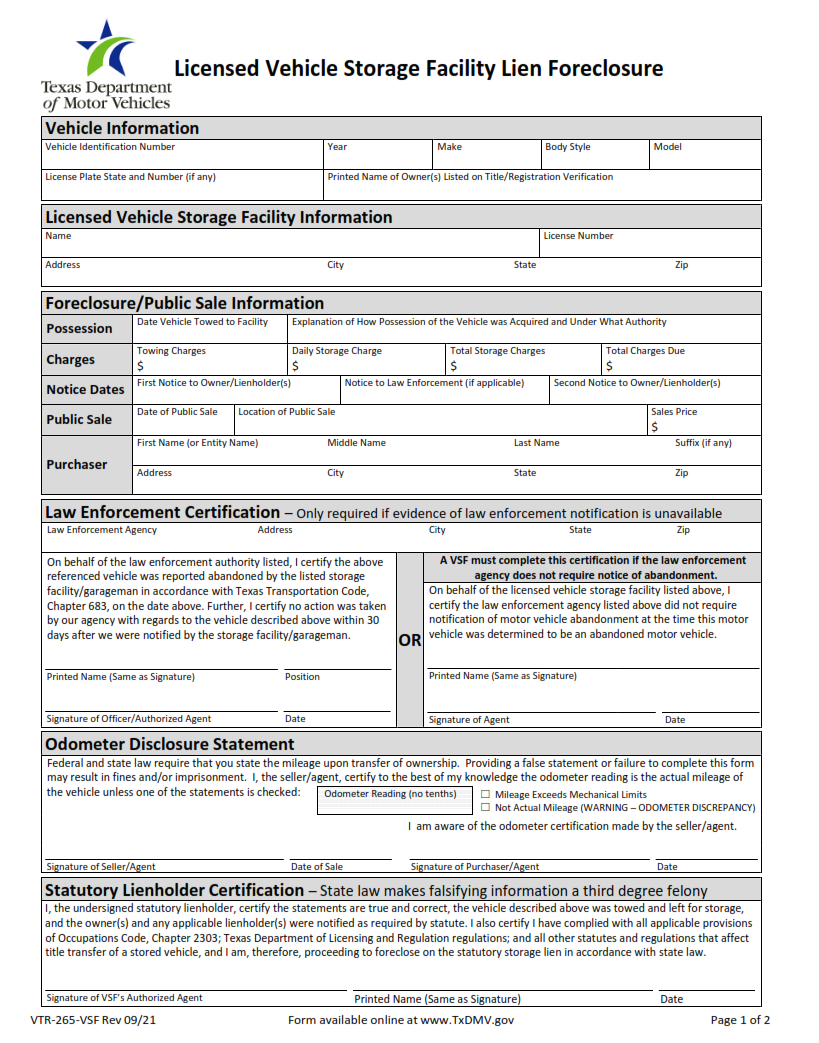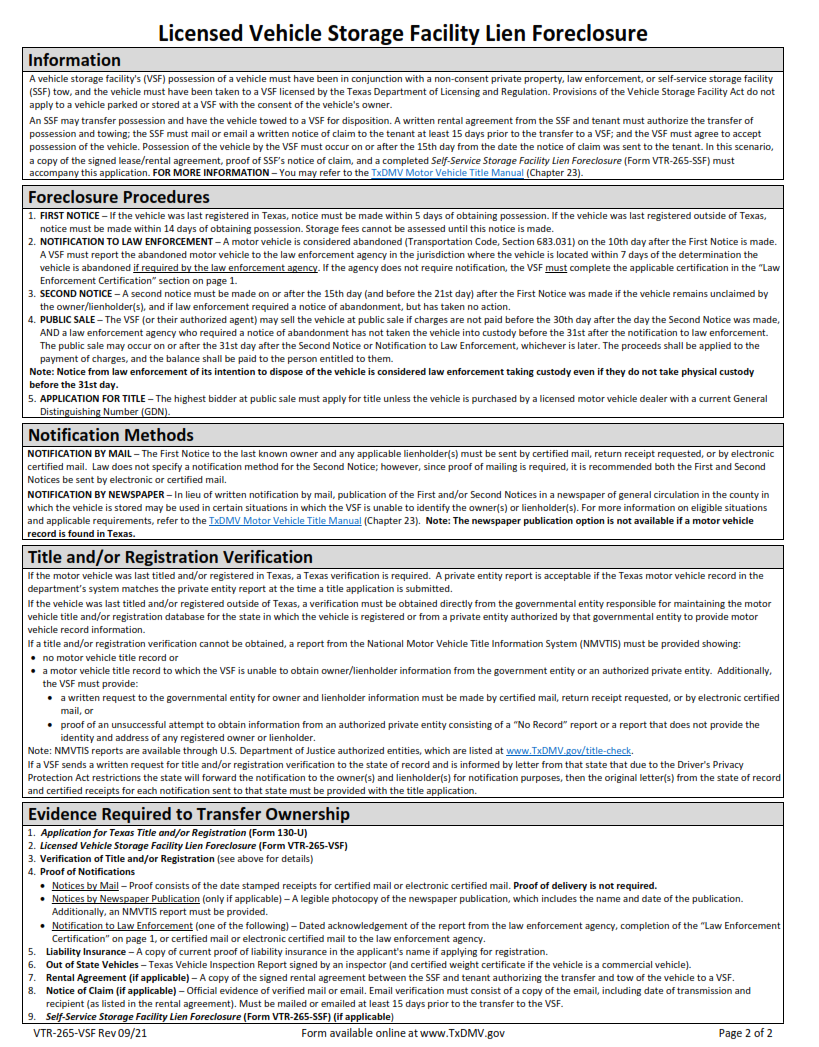ORIGINFORMSTUDIO.COM – VTR-265-VSF – License Vehicle Storage Facility Lien Foreclosure – The concept of vehicle storage facility lien foreclosure is one that many people may not be familiar with. This article will focus on the specific process of VTR-265-VSF, which stands for Vehicle Storage Facility Lien Foreclosure. It is a legal process involving the sale of vehicles held in a storage facility due to nonpayment of fees or charges by an owner. The underlying principle behind this process is to protect the rights and interests of individuals who rely on their vehicles for transportation as well as businesses that need vehicles to conduct their operations.
Download VTR-265-VSF – License Vehicle Storage Facility Lien Foreclosure
| Form Number | VTR-265-VSF |
| Form Title | License Vehicle Storage Facility Lien Foreclosure |
| File Size | 1 MB |
| Form By | Texas DMV Form |
What is a VTR-265-VSF Form?
The VTR-265-VSF form is a legal document used by the Texas Department of Motor Vehicles (TxDMV). It serves as an application for a License Vehicle Storage Facility Lien Foreclosure. This process allows vehicle storage facilities to apply for a lien against motor vehicles that have been abandoned on their property.
Once the form is completed, it must be submitted to the TxDMV along with the applicable fees and copies of related documents, such as bills of sale or release letters from previous owners. These documents help establish proof that the vehicle in question was abandoned and that all necessary parties have given consent for its disposal. Once approved, the facility will receive written notice from TxDMV authorizing them to dispose of or sell the vehicle.
What is the Purpose of the VTR-265-VSF Form?
The VTR-265-VSF form, or License Vehicle Storage Facility Lien Foreclosure form, is an important document for vehicle storage facility owners and operators in the State of Texas. This Texas Department of Motor Vehicles (TxDMV) form serves as a formal request to foreclose a lien on any vehicles stored at their facility. It provides the necessary information and documentation required by the TxDMV to process the foreclosure of the lien.
When completing this form, vehicle storage facility owners must provide detailed information about each vehicle in storage, including make, model, year, license plate number and VIN number. At least two photos of each vehicle should be included with the completed form as proof that it is stored at their facility.
Where Can I Find a VTR-265-VSF Form?
The VTR-265-VSF form is an important document for any person looking to obtain a license to operate a vehicle storage facility in the state of Texas. The form must be completed and submitted to the Department of Motor Vehicles before a license can be issued.
The VTR-265-VSF form is available on the Texas Department of Motor Vehicles website. It can also be obtained from your local county tax office or at any DMV office in the state. The form must be filled out completely and accurately, including all required information such as name, address, phone number, date of birth, Social Security number and other pertinent information related to operating a vehicle storage facility. Once completed, it should be mailed or hand delivered to your local DMV office for processing.
VTR-265-VSF – License Vehicle Storage Facility Lien Foreclosure
The Texas Transportation Code (VTR-265-VSF) outlines the procedures for License Vehicle Storage Facility lien foreclosures. The Code provides strict guidelines for vehicle storage facilities to follow when pursuing a lien foreclosure on a vehicle left in their care.
First, the facility must send a notice of intent to the owner or operator of the vehicle outlining the amount due and informing them that failure to pay will result in a lien foreclosure on their vehicle. If payment is not received within 20 days, then the facility may begin proceedings to reclaim their fees through legal action. A Notice of Lien Foreclosure must be sent at least 10 days prior to any action being taken and an advertisement of the sale must be posted in two public places at least once a week for four consecutive weeks prior to auctioning off the car.
VTR-265-VSF Form Example

